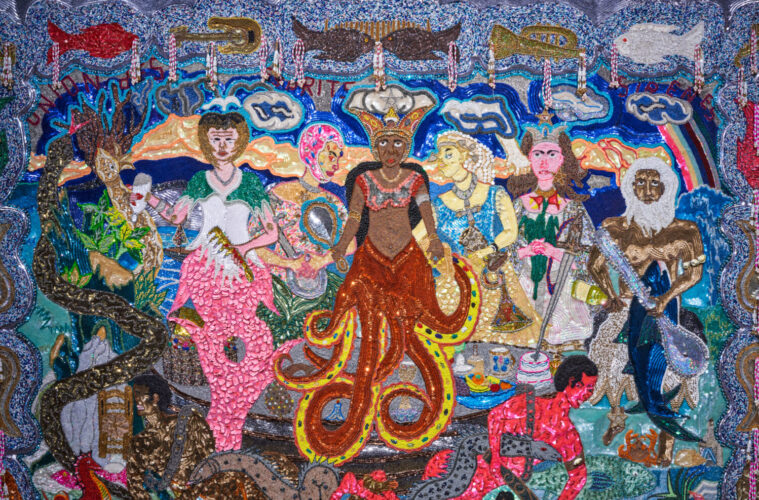Haitian artist Myrlande Constant’s fantastical world is a vast expanse of gods, demigods, spirits, saints, symbols, nature, myth, and magic — expressed in large-scale embroidered and hand-beaded narrative tapestries of superlative shimmer, divinity, and detail. For more than 30 years, Constant has labored night and day in the service of her visions, translating lived experiences and compositional directives received from her religious consciousness into symphonies of hundreds of thousands of stitches, beads, and sequins. For sheer intensiveness of her process — quite apart from the pointed and poignant content — it’s easy to understand her work in a ritualistic, devotional framework. But it’s in considering the operatic tableaux and the transcendent stories of men, women, gods, monsters, and integrative post-colonial religiosity that the mind is truly set ablaze.
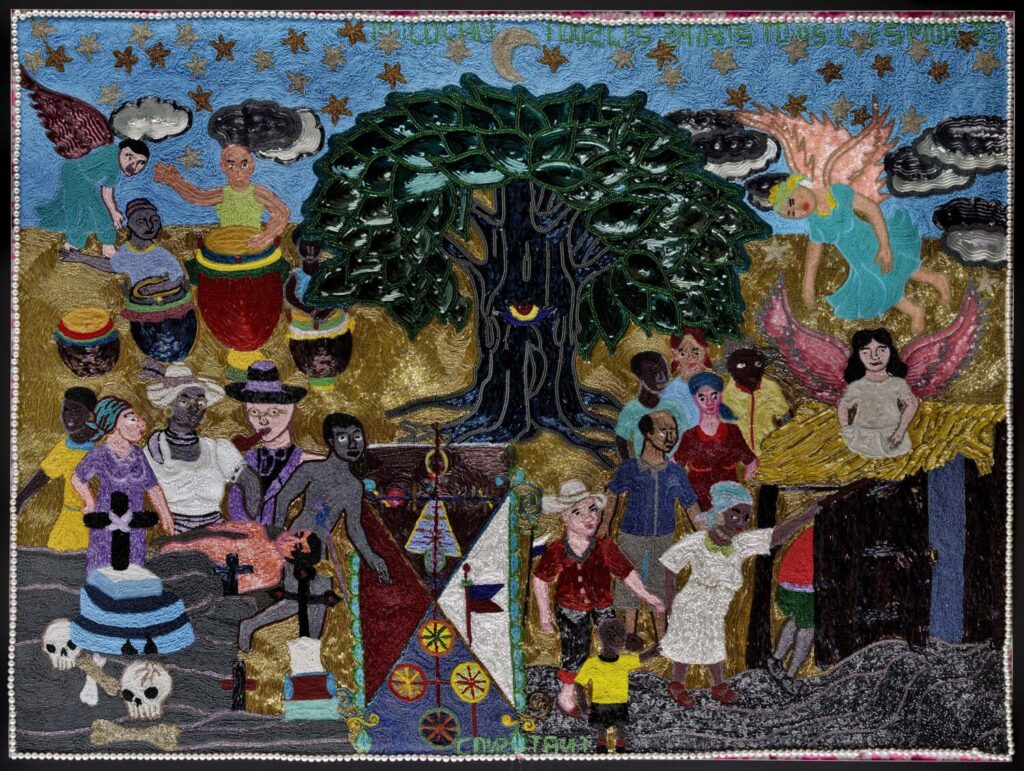
Myrlande Constant: Milocan Tous les Saints Tous les Morts (Milokan, all the saints, all the dead), c. 2000; beads, sequins, and fabric (American Folk Art Museum, Gift of Robert Brenner; Photo by Gavin Ashworth; image courtesy of American Folk Art Museum/Art Resource NY)
Constant’s works are in the Vodou drapo tapestry/flag tradition and depict Haitians, Catholic saints, and Vodou spirits in sweeping yet detailed scenes of Haitian history and everyday life. Among the roughly 30 works in the Fowler Museum’s retrospective survey The Work of Radiance, consider single masterpieces like Milocan, Tous les Saints, Tous les Morts (Milokan, all the saints, all the dead), c. 2000. The work depicts a gathering under the billowing canopy of a broad-limbed, majestic, dark-limbed, sentient tree. A diverse crowd of figures that includes everyday folks, fancy dressers, lwa (Vodou spirits), ancestors, saints, and departed souls, singers, drummers, and winged angels is arrayed among a field of flags and banners, skulls and symbols, stars and waves. The level of detail from textile patterns to tree leaves, grains of sandy earth, and human emotions is as precise as a painting. In fact Constant has been known to refer to her approach as “painting with beads,” although there’s so much more to it than that.
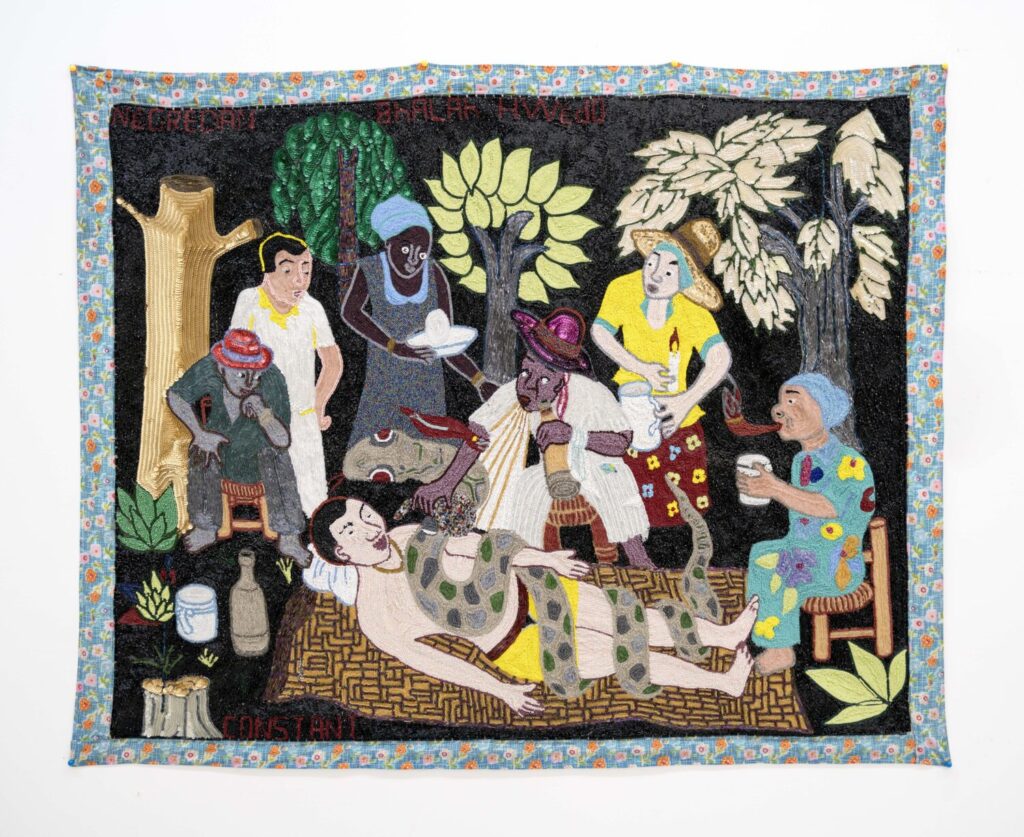
Myrlande Constant: Nègre Danbala Wedo, 1994–2019; sequins, glass beads, and silk on cotton (Collection of Pérez Art Museum Miami; image © Myrlande Constant; image courtesy of CENTRAL FINE; Photo by Armando Vaquer, 2020)
Constant depicts religious ceremonies, important events in Haitian history, and the richness of everyday life; alongside both critiques and celebrations of complex post-colonial religion and nationalism, as well as major works commemorating events like the 2010 earthquake, one finds still lifes, wedding scenes, single-figure portraits, and ornate abstract pattern-pieces as well. These are made with the same adventurous palette and allure of reflective textures, and the same painstaking attentions, as the more literary works, reflecting the advanced level of craft and pleasure that animate Constant’s practice—and her capacity for personal expression alongside her work with the Vodou spirits. As a short but powerful documentary film and an accompanying monographic publication eloquently unpack, for Constant it’s all one big interconnected idea and all inspirations are allowed—but at the same time, the work of the spirit always comes first, and she’s suffering no fools in its pursuit.
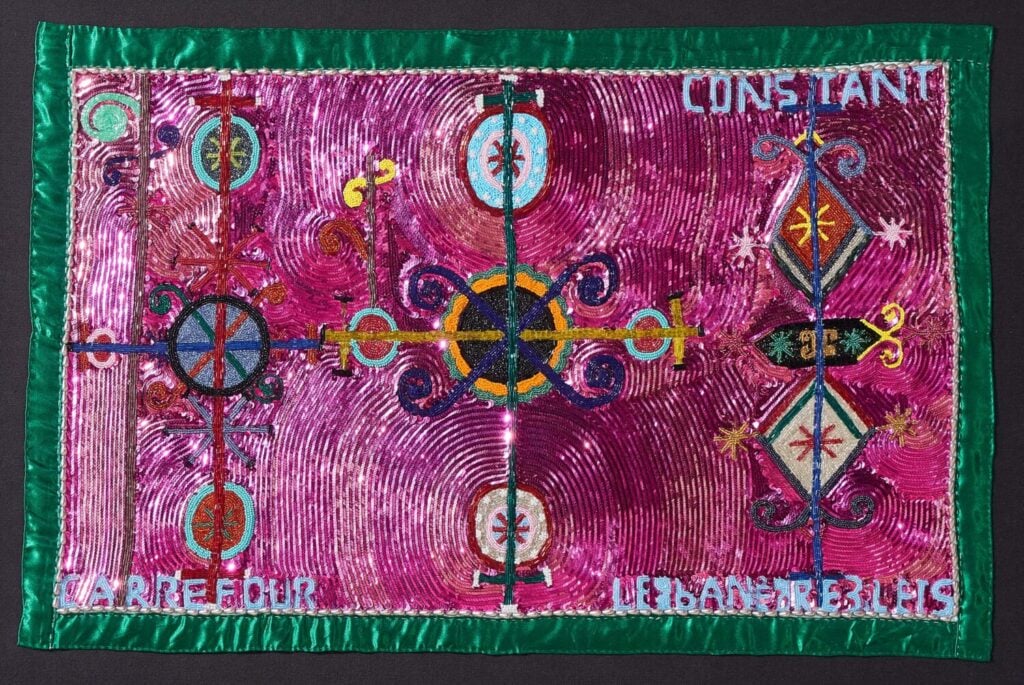
Myrlande Constant: Carrefour Legba Nègre 3 Îlets (Kafou [crossroads]–Legba man of Twa Zile [three islands]), early 2000s; fabric, sequins, and beads (Waterloo Center for the Arts Permanent Collection; image © Waterloo Center for the Arts; Photo by Jerry Grier, 2020)
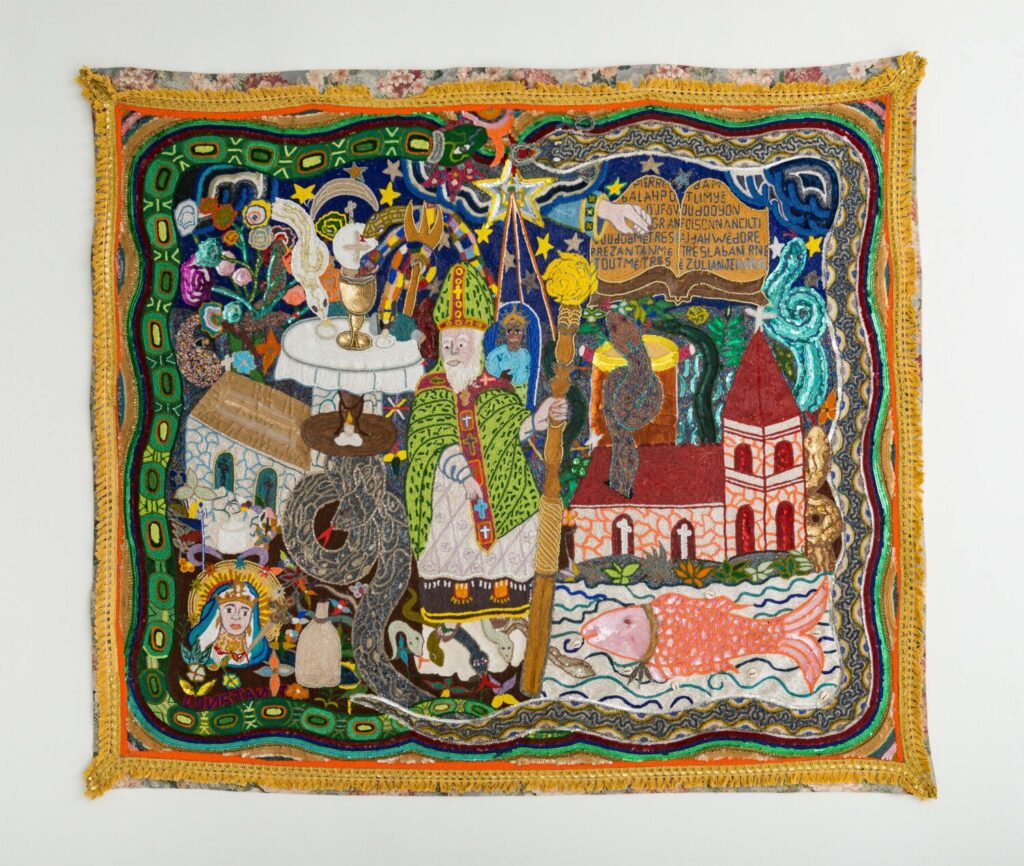
Myrlande Constant: Pierre Danbalah Pòt Limyè Oufò Voudoo. Yon Gran Poison Nan Cilti Voudoo. Metres Aidah Wèdo Reprezantan Metres Labanirne. Tout Mètres Èzuli an Jeneral (Pyè Danbala bearer of light of the Vodou temple. A big fish of Vodou culture. Mistress Ayida Wèdo representative of Mistress Labalèn |the whale]. And of all mistresses Èzili in general), 2017; sequins and beads on fabric (Collection of Nicholas Brandt; © Myrlande Constant, image courtesy of CENTRAL FINE; Photo by Armando Vaquer, 2017)
Rasanbleman Soupe Tout Eskòt Yo, 2019, reimagines the traditional biblical Last Supper by centering a Black Bondye amid a gathering of lwa more like a worshipful party than a solemn meal. St. George, dragon-slayer, is quite popular within this idiom, as is St. Patrick, snake-charmer. Constant’s Pierre Danbalah Pòt Limyè Oufò Voudoo. Yon Gran Poison Nan Cilti Voudoo. Metres Aidah Wèdo Reprezantan Metres Labanirne. Tout Mètres Èzuli an Jeneral (Pyè Danbala bearer of light of the Vodou temple. A big fish of Vodou culture. Mistress Ayida Wèdo representative of Mistress Labalèn |the whale]. And of all mistresses Èzili in general)—a particularly symbol-rich scenario from 2017—depicts just such an episode. In the gameboard-like construction, St. Patrick and all manner of serpents (powerful symbols in most religious texts) form a web and borders with an energetic movement across a church, a mitred bishop, a Biblical fish, indigenous royalty, open tabernacles, a table of holy sacraments, and more such elements in a fertile and bountiful landscape.
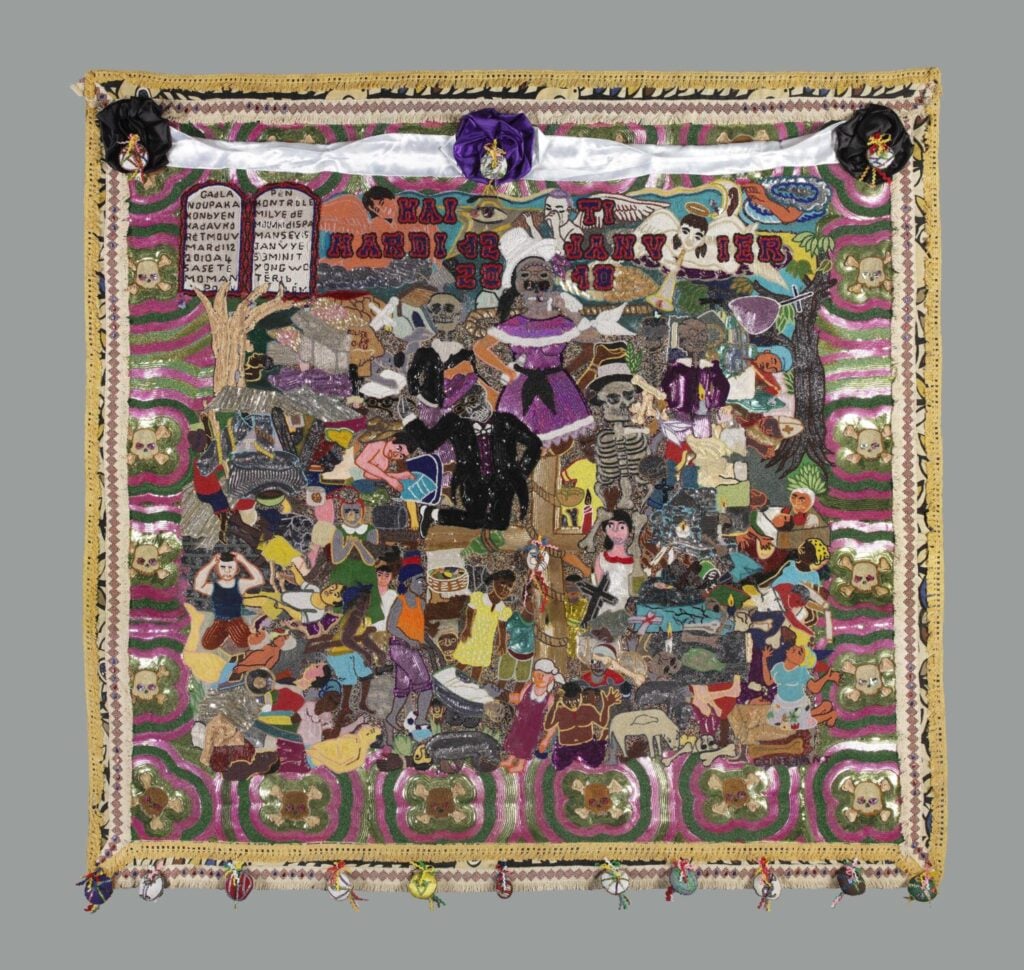
Myrlande Constant: Haiti Madi 12 Janvye 2010 (Haiti, Tuesday, January 12, 2010), 2012, fabric, beads, and sequins (Fowler Museum collection; Photo by Don Cole, 2022)
This integrated existence of the human and supernatural, past and present, ancient and modern, living and dead, sacred and secular, celebration and suffering, catastrophe and miracle, healing and justice, faith and science, governance and revolution, invasion and liberty, art and service is the driving force in Constant’s life and in her studio. The monumental Haiti Mardi 12 Janvye 2010 (Haiti, Tuesday, January 12, 2010) chronicles Constant’s personal recollection of the aftermath of that year’s devastating earthquake, when the lwa grieved together with humans, and every single one of what seems to be thousands of individual figures is shown both struggling themselves and rushing to help others.
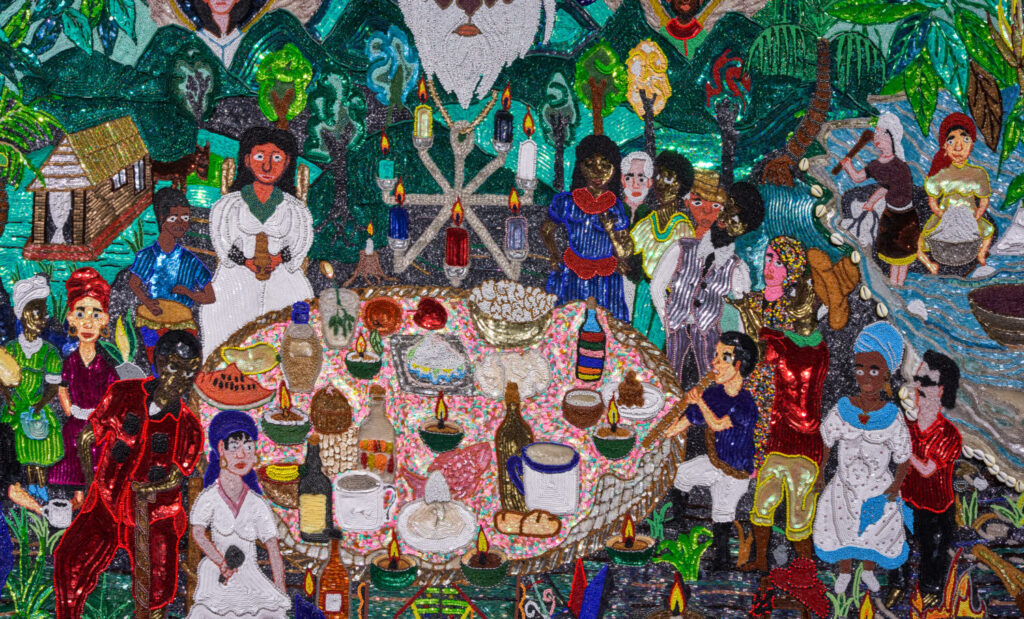
Myrlande Constant: Rasanbleman Soupe Tout Eskòt Yo (All the escort gathering for supper) (detail), 2019; fabric, beads, and sequins (Collection of Alan Faena; Courtesy of Faena Art; Photography and image © by Oriol Tarridas, 2021)
Constant was born in Port-au-Prince where she learned the art of beading by working alongside her mother in a wedding dress factory. Once she felt the calling to a higher service, she quickly became a pioneering female figure within the traditionally male dominated drapo space. The Fowler Museum’s long-planned survey now follows a star turn at the 2022 Venice Biennale (a few pieces of which are in this exhibition) and an extensively acclaimed solo show in NYC at Fort Gansevoort. The prolific scale of her output is made all the more impressive when, confronting the works in person, it becomes clearer than words could ever express just how much patience, precision, focus, finesse, faith, passion, and vision flow into their making.
A free one-day symposium on the art of Myrlande Constant convenes scholars from around the country on May 12. Myrlande Constant: The Work of Radiance is on view at the Fowler Museum at UCLA through August 27; admission is free; for more information visit: fowler.ucla.edu.
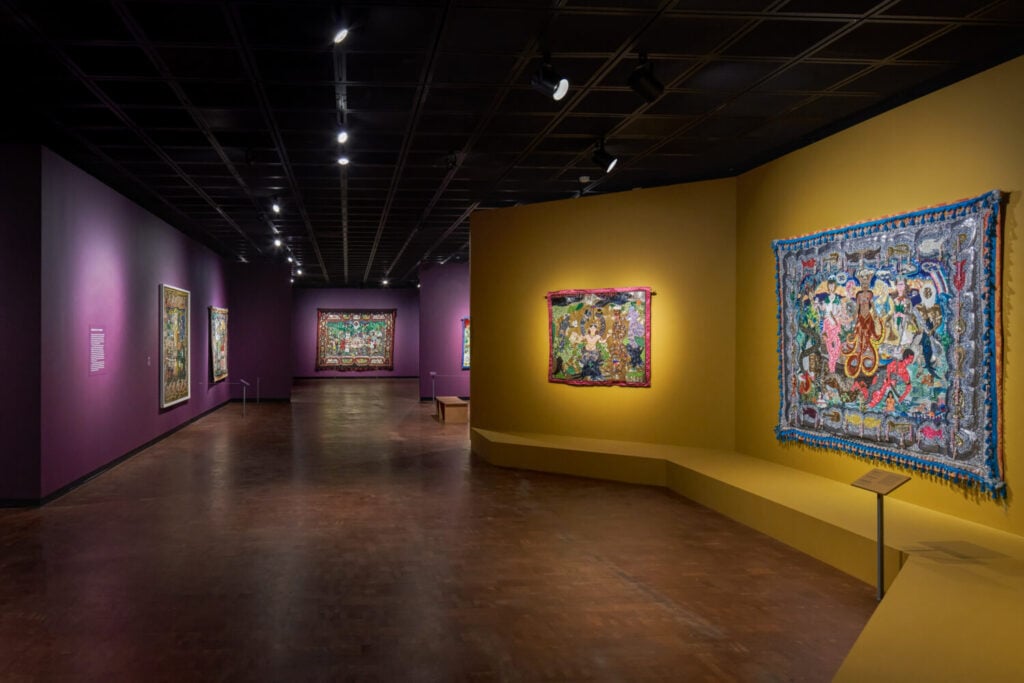
Installation view, Myrlande Constant: The Work of Radiance, Fowler Museum at UCLA, 2023. (Photo: Elon Schoenholz)
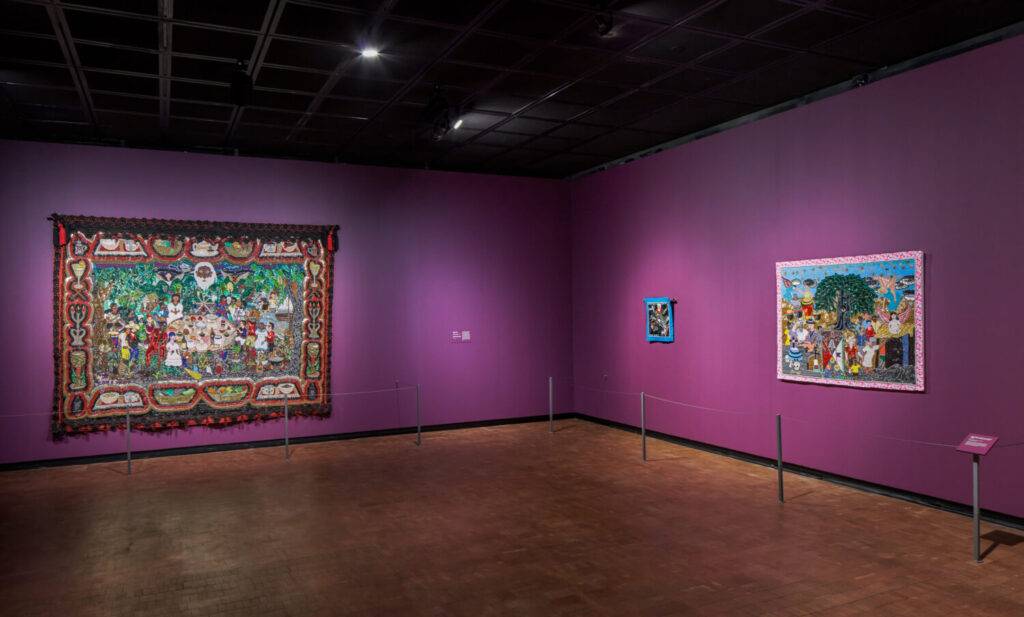
Installation view, Myrlande Constant: The Work of Radiance, Fowler Museum at UCLA, 2023. (Photo: Elon Schoenholz)
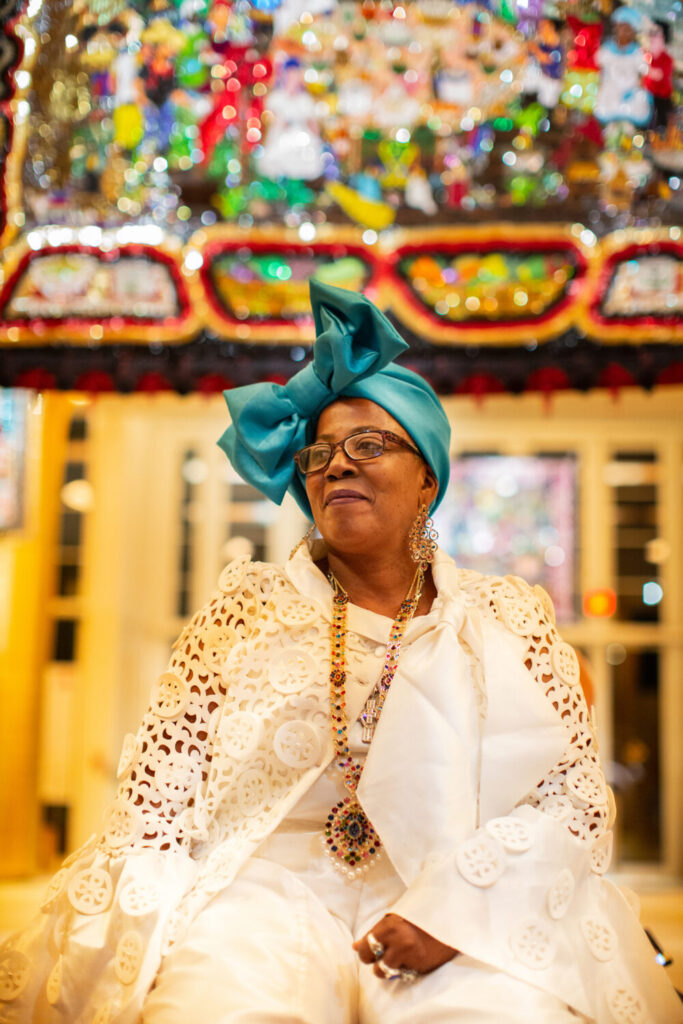
Portrait of Myrlande Constant, 2019 (Courtesy of Faena Art)
Editor’s note: The disclaimer below refers to advertising posts and does not apply to this or any other editorial stories.
Advertising disclosure: We may receive compensation for some of the links in our stories. Thank you for supporting LA Weekly and our advertisers.

